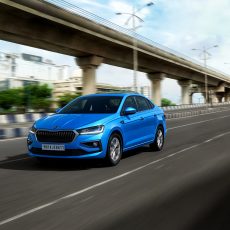 Car India takes stock of the marvels on four wheels that have captured the hearts of the cognoscenti for generations
Car India takes stock of the marvels on four wheels that have captured the hearts of the cognoscenti for generations
Compiled by: Aniruddha Mulgund
Cars come and go. Some secure a lasting place in the heart of the enthusiast. Some spawn generations of die-hard fans. Only a few take the man-machine relationship to the point of idolatry. Not only are these manifestations the result of several dedicated man-hours backed by phenomenal engineering talent, but also of determination and the spirit of innovation among able men and women. The colourful time-line of automotive history is dotted with engineering masterpieces that have changed the way cars have been built.
Six years and 72 issues later, we, at Car India, still haven’t tired of reminiscing about the marques that have given the word ‘iconic’ a whole new meaning. Here’s an ode to the six most iconic cars of the past six decades.
 MerCedeS BeNz 300 SL
MerCedeS BeNz 300 SL
A marque in the truest sense of the word and one to blaze the world supercar trail, the 300 SL makes car collectors crawl through glass. Born of a thoroughbred racing pedigree, the 1952 Mercedes-Benz 300 SL (W194) was a racing car that participated in races such as the 24-hour Le Mans, sports car race of the Eifelrennen at the Nürburgring and at Mexico’s Carrera Panamericana.
Acting on a suggestion from New York dealer, Max Hoffman, Mercedes-Benz launched a street-legal version of the car. And unlike other Mercedes-Benz cars of the time, the 300 SL was launched at the 1954 New York Auto Show. Not only was it the only car to feature gull wing doors, it was also the fastest car of its time. It was powered by the first gasoline direct injection on the in-line six-pot engine. The SLS AMG inherits the 300SL DNA and continues to be the successor to the classic.
 Jaguar e-Type
Jaguar e-Type
An affordable sports car. Yes, we know it sounds like a contradiction in terms. However, at a time when Ferraris were crawling toddlers, and expensive little toddlers at that, the E-type managed just that. The E-type was built in the night when the wind tunnels used to design it could use all the electricity the city produced. In fact, it was also tested at unearthly hours to unleash its 300+ BHP to attain 225 km/h and above. A respectable marque, Enzo Ferrari called it the prettiest car ever made. Unveiled at the Geneva Motor Show in 1961, the E-type recently celebrated 50 years of undiluted driving pleasure.
 FERRARI DINO 206 GT
FERRARI DINO 206 GT
The name brings to the fore images of a howling 6.0-litre V12 ripping down a straight at unbelievable speeds and smoking tyres through the bends. But there was a time when the Italian supercar maker pioneered in smaller engines too. Between 1965 and 1976, Ferrari introduced the Dino series with engines which had less than 12 cylinders. The brand was named after the founder’s late son, Alfred Dino Ferrari. The 206’s full aluminium body derived its profile from previous Italian designs and was propelled by a 160 HP 2.0L V6 engine. Weighing less than 650 kg, the Dino 206 was light, agile and razor-sharp. Only 152 of these were built between 1968 and 1969. The 206 GT was raced at Germany’s Freiburg-Schaunisland course and also at Nürburgring.
 PORSCHE 911
PORSCHE 911
The 911 was not the fastest, the best or the most powerful car of our times, but it had something that other cars lacked: character! A successor to Porsche 356, the marque has survived over four decades to be awarded the fifth Car of the Century. Since inception in 1963, Porsche have retained its basic design through several generations. The enginehas steadfastly stayed at the back and was air-cooled until 1997. And that was when Mercedes-Benz were busy developing a lean burn engine! In the competitive worldof motor sport, the 911 has been successful at various events such as the Nürburgring, Daytona and alsothe esteemed 24-hour Le Mans. Private teams have often turned to the German car-maker for entering motor sport events.
 McLaren F1
McLaren F1
Gordon Murray’s school books were full of three-seater variations of car design; a design that put the driver in the optimum position: in the middle. A few years later he went on to become the head designer for McLaren Automotive. The result was the world’s fastest production car. The McLaren F1 was a ground-breaking design that used expensive and new material such as titanium, magnesium, carbon fibre and even gold. With a complete carbon fibre monocoque chassis it weighed a little over a ton and was powered by a 6.0L V12. It produced a whopping 627 BHP to achieve a top speed of 391 km/h. It held the record for the world’s fastest production car for more than a decade.
 Bugatti Veyron
Bugatti Veyron
The Veyron is the result of Bugatti’s neurotic urge to stay at the pinnacle of engineering finesse. And they have achieved that not once, but twice. The original Veyron EB16.4 peaked at 408 km/h. Then, after being challenged for a while, the Super Sport version did a blistering 431 km/h. An 8.0L W 16 engine, which breathes through four turbochargers, produces a spine-shuddering 1,184 BHP and is cooled by 10 radiators! To make it agile enough to slice its way though the air and maintain adequate down-force to keep it planted, a drag co-efficient of 0.36 is maintained. When one thinks that the Veyron posts speeds well above F1 standards while providing the comfort of a grand touring car, it is truly an incredible machine. And it remains the world’s fastest production car to this date. Need we say more?




